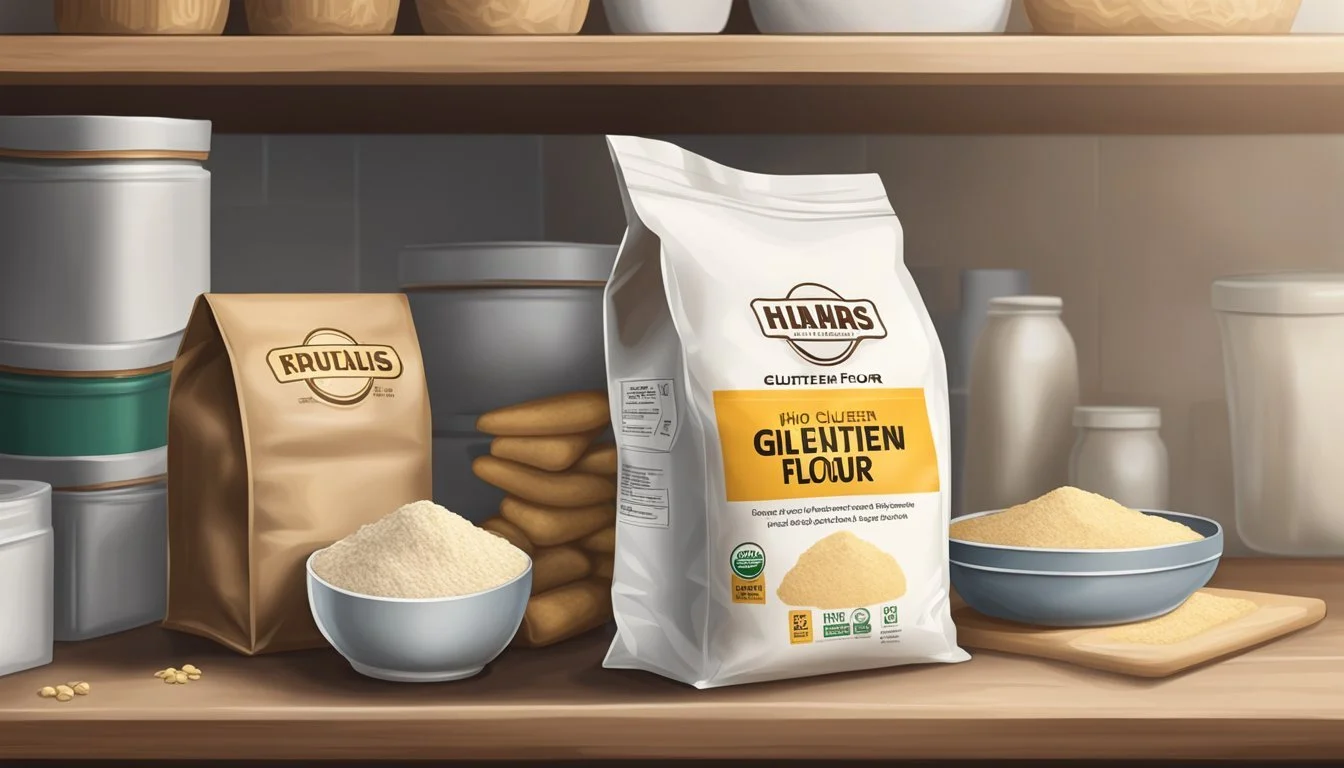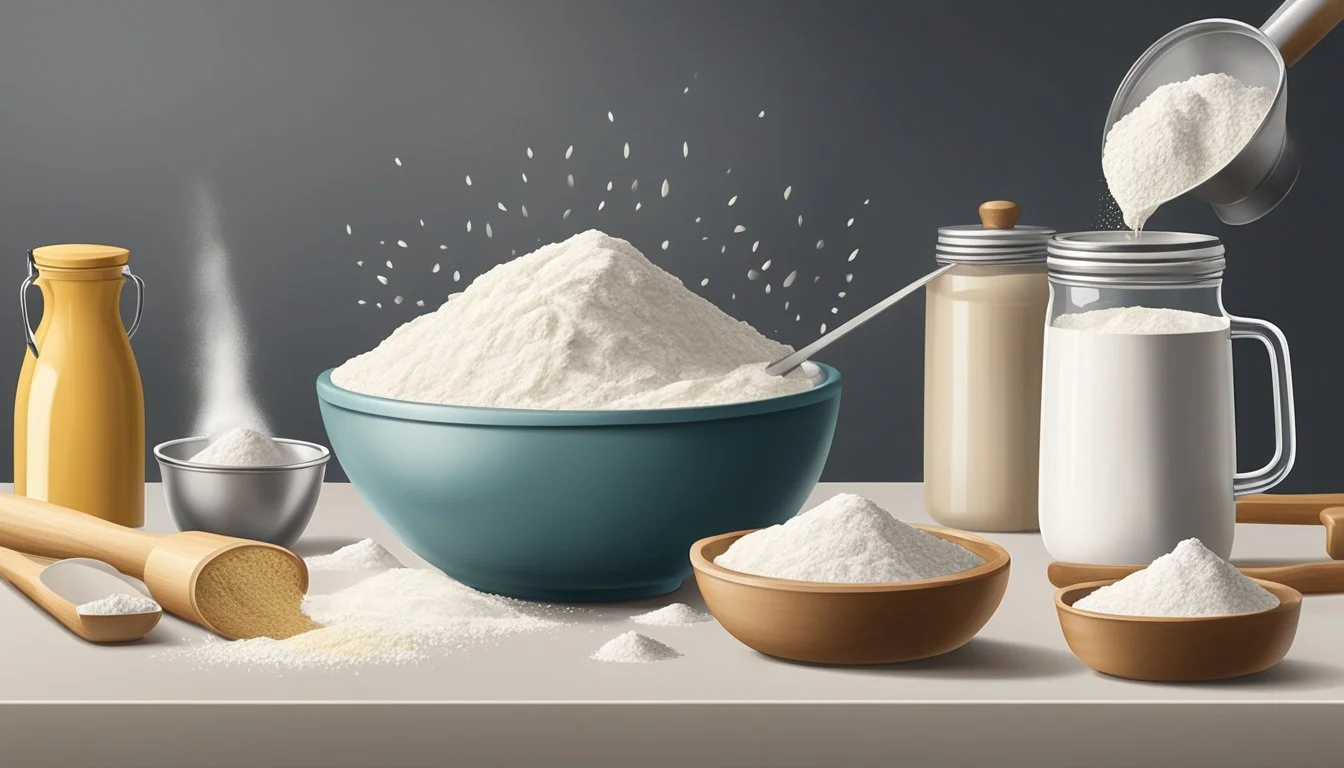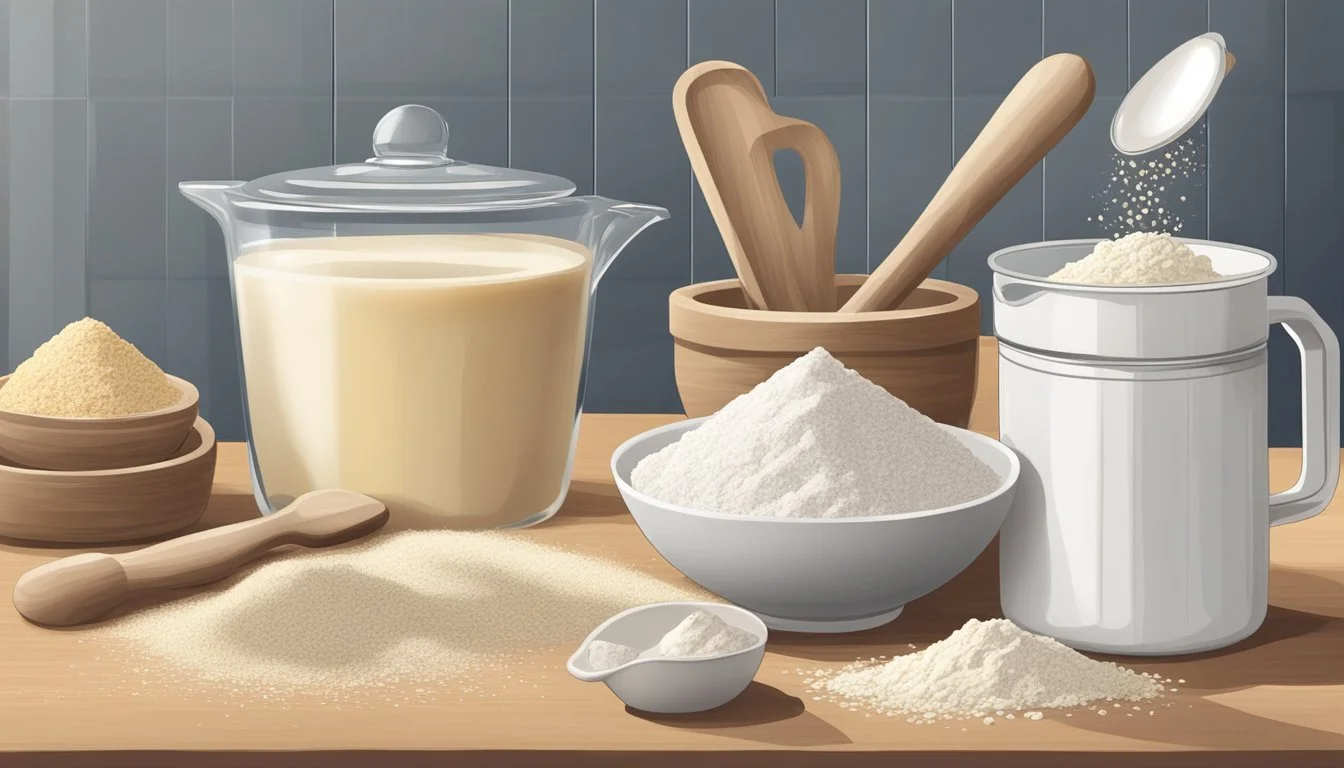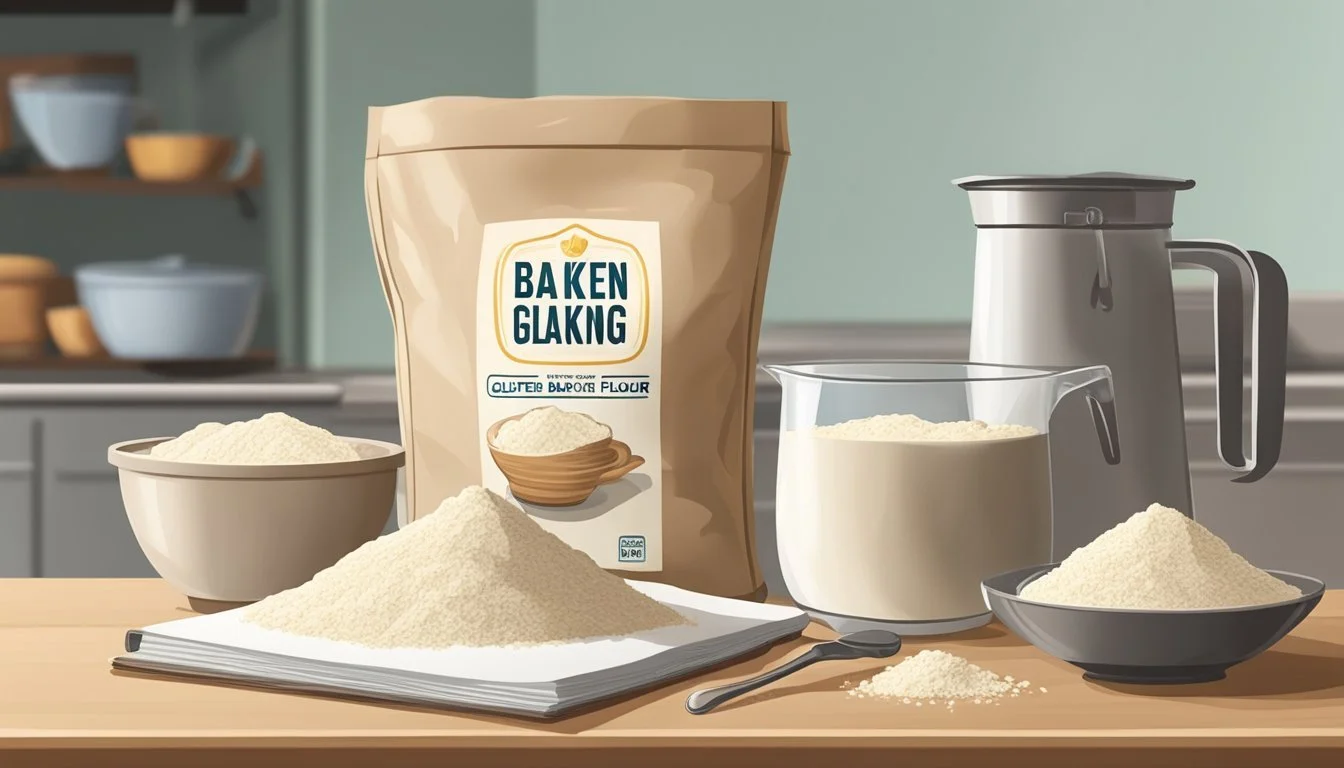How Long Does High-Gluten Flour Last?
Shelf Life and Storage Tips
High-gluten flour, a baker's ally for creating robust and elastic doughs, is a staple for recipes requiring a strong gluten network such as breads (how long does bread last?) and rolls. Its defining characteristic is the elevated protein content, which stands between 13% to 14.5%, revealing its capacity to produce more gluten. This quality makes it a go-to option for professional bakers and enthusiasts aiming for chewier textures and loftier bread.
Despite its durability in baking, the shelf life of high-gluten flour is a concern for those who wish to maintain the quality of their baked goods. Typically, high-gluten flour stays fresh for approximately 3 to 8 months when stored at room temperature, although it can vary depending on storage conditions. An airtight container is crucial for preserving its freshness, and when stored in the freezer, the shelf life can be extended even further, ensuring that the flour retains its desirable baking properties for a prolonged period.
Attention to storage conditions is key to preventing spoilage and waste, as flour, like many pantry staples, is susceptible to environmental factors that can adversely affect its quality. Humidity, heat, and exposure to air can hasten the degradation of flour, leading to stale or rancid flavors and compromised baking performance. By understanding and managing how to store high-gluten flour properly, bakers can maximize the shelf life and reliability of this essential ingredient.
Understanding High-Gluten Flour
High-gluten flour is crucial for bread-making due to its strong structure-building properties, which are essential for the proper rise and chewy texture of the dough. This section will investigate its defining features, its high protein composition, and its role in baking.
Definition and Characteristics
High-gluten flour, deriving from hard spring wheat, is distinguished by its high protein content. This flour type is specifically milled to have more gluten, which is the key protein that gives baked goods structure and elasticity. Common characteristics include a robust texture and an enhanced capacity to retain gas, which contributes to the leavening process.
Protein Content and Gluten Levels
The protein content of high-gluten flour is notably higher than other types of flour, typically ranging between 13% to 14.5%. Gluten makes up about 75% to 80% of this protein, imparting the flour with superior strength and elasticity. These attributes make the flour especially suited for the demands of artisan breads, which require a chewy texture and ample rise.
Common Uses in Baking
High-gluten flour is indispensable for crafting various baked goods, particularly those that benefit from a sturdy structure and a notable rise. Among its most common applications:
Bread: Provides the dough with the firmness necessary for loaves that are voluminous and have a well-developed crumb.
Artisan Breads: Enables the creation of sophisticated bread varieties that have distinctive chewy textures and crusts.
Pizza Dough: Imparts the desired chewy and elastic texture that is characteristic of an excellent pizza base.
By ensuring proper gluten development, this flour is an essential ingredient for professional and home bakers aiming to produce quality bread and other baked items with the desired texture and structural integrity.
Comparing Flour Types
When assessing the longevity of high-gluten flour, it's essential to consider the properties and storage requirements of various flour types, which affect their shelf life.
High-Gluten versus All-Purpose Flour
High-gluten flour, typically containing 12.5-14.5% protein, is known for its superior elasticity and strength, making it ideal for baking chewy breads and other yeast-risen products. This strength also contributes to a longer shelf life compared to all-purpose flour, which averages 10-12% protein content and is commonly used for a wide range of baking due to its balanced gluten content.
Specialty Flours and Their Applications
Specialty flours like cake flour and pastry flour have lower protein content, typically 7-9% and 8-10% respectively, making them perfect for tender cakes and pastries but contributing to a slightly shorter shelf life compared to stronger flours. Whole wheat flour (how long does whole wheat flour last?), which includes the bran and germ of the wheat kernel, contains more nutrients but tends to spoil faster because of higher oil content.
Bread flour sits between high-gluten and all-purpose flours, with a protein content of 12-14%, and is specifically designed for yeast breads.
00 flour is finely ground with a lower to moderate protein content, ideal for pasta and pizza crust.
Rye and barley flour are typically used in combination with wheat flours to impart distinct flavors.
Gluten-Free Alternatives
Gluten-free flours such as almond flour, coconut flour, and nut flours are essential for those avoiding gluten. They are higher in fat content and spoil more quickly, often within 3-6 months. Storage in a cool, dark, and dry place is crucial. These flours have varying protein contents and may require additional binding agents to mimic gluten's properties in recipes.
Shelf Life of High-Gluten Flour
High-gluten flour typically has a longer shelf life than whole wheat flours due to its protein content. However, storing it properly is key to maintaining its quality up to the best-by date.
Ideal Storage Conditions
For high-gluten flour to maintain its quality, it should be stored in a pantry at room temperature, shielded from heat and light. An airtight container is paramount to prevent exposure to moisture and air, which can affect the flour's freshness. Keeping high-gluten flour in a fridge can extend its life, but it must be well-sealed to prevent the absorption of odors.
Signs of Spoilage
High-gluten flour can go bad and this is often indicated by:
Smell: A sour or rancid odor is a clear sign that the flour is no longer good for consumption.
Appearance: Any signs of mold or pests within the flour also signal spoilage.
Texture: If the flour clumps together due to moisture, it may have been compromised.
Extending Freshness
To ensure the high-gluten flour remains fresh as long as possible, one should:
Store it in an airtight container or heavy-duty freezer bags.
Label the container with the best-by date to keep track of its age.
Consider refrigerating or freezing the flour to extend its shelf life well beyond the pantry's typical range, especially in warm climates or during hot weather.
Keeping high-gluten flour away from sources of moisture and heat helps preserve its baking qualities and prevents it from turning rancid before its labeled best-by date.
Nutritional Considerations and Dietary Relevance
This section focuses on the nutritional profile of high-gluten flour and its implications for various diets, particularly addressing caloric intake, nutrient content, and considerations for individuals with gluten-related health issues.
Caloric and Nutrient Content
High-gluten flour is a rich source of protein, providing between 12.5-14.5% protein content, which contributes to its calorie content. A typical serving contains:
Calories: 100 grams of high-gluten flour typically contains around 364 calories
Protein: 12.5-14.5 grams
Essential nutrients: Minerals such as iron and B vitamins
The nutrient density makes it a significant addition to diets requiring high protein intake.
Gluten-Related Health Concerns
Due to its high gluten content, this flour is a concern for individuals with celiac disease or non-celiac gluten sensitivity. Consumption of gluten in such populations can lead to:
Immune reactions
Intestinal damage
Digestive issues
People with these conditions should avoid high-gluten flour to prevent adverse health effects.
Role in Gluten-Free Diets
While high-gluten flour offers nutritional benefits, it holds no place in gluten-free diets due to its gluten content. Individuals who follow such diets, either by medical necessity or personal choice, seek alternative flours that do not trigger their digestive issues or other gluten-related symptoms. These alternatives include flours made from rice, almond, coconut, or other gluten-free grains and nuts.
Baking with High-Gluten Flour
High-gluten flour is indispensable for professional and home bakers aiming for exceptional texture and structure in certain baked goods. Its high protein content imparts chewiness and resilience, essential for breads, pizza crusts, and bagels (how long do bagels last?).
Effect on Texture and Structure of Baked Goods
When bakers choose high-gluten flour, they’re opting for a flour that provides a notable chewiness to the finished product. The high protein content—typically between 13% to 14.5%—is the secret behind this desirable texture. As the protein interacts with water, it forms gluten, which gives dough its elasticity and strength. This results in baked goods that are not only airy and well-risen but also possess a substantial bite and sturdy structure, making high-gluten flour particularly well-suited for hearty breads and chewy bagels.
Creating Artisan Breads and Pizza Crusts
Artisan bakers often turn to high-gluten flour to achieve distinctively chewy and dense textures in their creations. The robust structure provided by this flour is critical in supporting the intricate shapes and hearty crusts characteristic of artisan breads. The high protein content facilitates the formation of a gluten network capable of trapping gases during the fermentation and baking processes, thereby developing the open, airy crumb that artisan breads are known for. Similarly, when crafting pizza crusts, high-gluten flour yields a crisp exterior and a chewy interior—qualities that are hallmarks of an authentic pizza experience.
Adjusting Recipes for High-Gluten Flour Use
When incorporating high-gluten flour into recipes, bakers may need to adjust the hydration ratio to accommodate the higher protein content. Because of its higher absorbency, more water is typically needed to achieve the correct dough consistency. Recipes should be modified on a case-by-case basis, taking into consideration the desired texture of the final product. For instance, increasing hydration can help prevent the dough from becoming too dense or dry, ensuring a balance between chewiness and tenderness.
Industrial and Artisanal Baking Applications
In the world of baking, high-gluten flour serves as a robust foundation for various bread types due to its high protein content, impacting elasticity and the ability to retain gases during fermentation.
Role in Large-Scale Bread Production
Large-scale production relies on high-gluten flour, primarily derived from hard red winter and hard red spring wheats, for consistency in producing a vast array of bread products. The protein range of 13.0-15.0% offers the necessary structure for loaves to rise effectively. Industrial settings often incorporate high-gluten flour to manage the hefty demands of mass production, ensuring that breads maintain a uniform quality. The introduction of vital wheat gluten can boost protein levels even further when making products such as seitan, (What wine goes well with seitan?) a meat substitute.
Elasticity: The elasticity of dough made with high-gluten flour is paramount in industrial settings, where the mechanical handling of dough can be rigorous.
Bread Flour: This term often denotes high-gluten flour in commercial settings and is essential for creating a strong gluten network in bread.
Use in Artisanal and Specialty Baking
For artisanal bakers, the use of high-gluten flour is a deliberate choice to achieve desired characteristics in specialty breads. Artisan breads benefit from the flour's protein content, which allows for intricate shapes and textures not typically found in mass-produced bread. The flour originates from select grains, such as Canadian Western Red Spring, to cater to the specific needs of artisanal bakers.
Spring Wheat: Preferred in artisan baking for its high protein, leading to well-developed gluten networks.
Artisan Breads: These breads are often characterized by crusty exteriors, chewy interiors, and rich flavors, attributed to the flour's quality and the artisanal techniques employed.
In both industrial and artisanal baking, high-gluten flour is a staple that provides a dependable framework to support a vast variety of baking applications.
Purchasing and Handling High-Gluten Flour
When purchasing high-gluten flour, it's crucial to choose a quality product, interpret labels correctly, and handle the flour in a manner that extends its freshness and prevents contamination.
Selecting Quality Flour
Shoppers should look for high-gluten flour made from hard spring wheat, as it contains a higher protein content, typically ranging between 13.0-15.0%. The flour should appear uniform in texture and free of any off smells or discoloration. It's best to buy smaller quantities if the use is infrequent, to ensure freshness.
Understanding Labels and Best-by Dates
Best-by dates serve as a guideline for optimal quality. Although high-gluten flour can remain stable for several months, it is recommended to purchase flour with a best-by date that allows ample time for use. The label might also provide storage instructions which are important to follow for maintaining the flour's quality.
Safe Handling to Prevent Contamination
Upon bringing high-gluten flour home, one should transfer it to an airtight container, preferably made of thick plastic or glass. If the original packaging is a sturdy plastic bag that is not compromised, it can suffice for storage. Keeping flour in a cool, dry place away from strong odors helps to prevent contamination and extend its shelf life.
Incorporating High-Gluten Flour in Diverse Recipes
High-gluten flour elevates texture by contributing strength and elasticity, making it an optimal choice for recipes where chewiness is desired. Its rich protein content transforms the structure of various baked goods.
Adapting Recipes for Enhanced Chewiness
When bakers seek to impart a satisfying chew to their creations, replacing part of the standard flour with high-gluten flour in recipes for items like pretzels or bagels is a common technique. For example, in a classic pretzel recipe, substituting 25% of the all-purpose flour with high-gluten flour can enhance the texture, offering a more authentic, chewy bite that pretzel enthusiasts crave.
Adjustment Example for Recipe Modification:
Traditional Bread: 100% All-purpose flour
Chewy Bread: 75% All-purpose flour + 25% High-gluten flour
Adapting muffin recipes may require caution, as the desired tenderness could be compromised by the strengthening effects of high-gluten flour.
Innovating with High-Gluten Flour for New Textures
Creative bakers experiment with high-gluten flour in unexpected applications, like cookies, seeking innovative textures. A small percentage of high-gluten flour can be added to the traditional flour used in cookie recipes to introduce subtle elasticity without detracting from their beloved crumbly nature. This ingredient should be used sparingly to avoid overly tough cookies.
Interpolation in Innovative Baking:
Classic cookie recipe: Replace up to 10-15% of regular flour.
Artisan bread variants: Use primarily high-gluten flour.
Care must be taken to balance the flour's protein level with other ingredients to preserve the intended outcome of the recipe.
The Science of Gluten in Baking
In the art of baking, gluten serves as the foundational protein complex that grants dough its structure and form. Two key components of gluten, glutenin and gliadin, work in tandem with water to create an elastic framework that defines a dough's texture and its response to leavening.
Gluten's Role in Dough Elasticity and Fermentation
When flour is mixed with water, the proteins glutenin and gliadin absorb the water and bond together to form gluten. This unique protein network contributes to the dough's elasticity, allowing it to stretch and retain its shape. Elasticity is crucial in the fermentation process, as it enables the dough to trap the gases produced by yeast or other leavening agents, leading to a rise in the dough.
Gluten content: Directly correlates with the resulting dough's strength and elasticity.
Protein content: Higher protein flours, like high-gluten flour, enhance dough elasticity.
Fermentation: Relies on an elastic dough to capture and hold gases for dough expansion.
The Interaction of Gluten With Other Ingredients
The interaction between gluten and other ingredients such as fiber, fat, and sugar can enhance or inhibit the performance of gluten in dough.
Water: Essential for hydrating gluten proteins and initiating gluten formation.
Fiber: Can compete with gluten for water, potentially affecting gluten development.
Fat: Coats the gluten strands, potentially softening the dough and limiting gluten development.
Sugar: In high amounts, can inhibit gluten formation by absorbing water that would otherwise be available for gluten development.
Factors such as kneading and the proportion of these ingredients play critical roles in the final baked product's texture and quality. Bakers adjust the balance of these factors to achieve the desired characteristics in their baked goods.
Sustainability and Sourcing of High-Gluten Flour
High-gluten flour, primarily derived from wheat, is a staple ingredient for bakers around the world. The flour’s sustainability and sourcing are crucial for environmental and economic reasons. Proper management of wheat cultivation and the milling process, as well as the selection of sustainably sourced flour, can minimize environmental impact and support consumers' health.
Environmental Impact of Wheat Cultivation
Wheat cultivation has significant environmental implications. Fertilizers, pesticides, and water use are key factors in the production process.
Fertilizers and Pesticides: Wheat production often relies on chemical fertilizers and pesticides, which can lead to soil degradation and impact water quality. The use of such chemicals is a concern for sustainability and biodiversity.
Water Use: Sustainable wheat farming practices include water management strategies to reduce consumption.
Employing crop rotation and organic farming can contribute to more sustainable agriculture. Alternatives like whole grain flours, including whole grain sorghum, are sometimes chosen for their lower environmental impact compared to traditional wheat.
Selecting Sustainably Sourced Flour
Consumers can choose high-gluten flour sourced from sustainable practices:
Certified Organic: Organic flour comes from wheat that has been grown without synthetic fertilizers or pesticides. This practice supports biodiversity and reduces chemical runoff.
Local Milling: Flour milled locally reduces transportation emissions. When whole grain flours are milled, the bran and germ remain, ensuring a more nutrient-dense product.
Sustainable Sources: Some manufacturers source their wheat from farmers who practice sustainable agriculture, including minimal water usage and soil health management.
Selecting flour from sustainable sources not only supports environmental health but also encourages a market for responsibly grown and processed wheat products.
Storing and Organizing Your Flour Collection
Proper storage extends the shelf life of high-gluten flour, while organized pantries facilitate easy access and efficient use.
Tips for Airtight Storage
One must ensure flour is stored in airtight containers to prevent exposure to air and moisture, which can compromise quality. It's recommended to transfer high-gluten flour from its original packaging to a container with a tight-sealing lid. Glass or plastic containers are ideal, but heavy-duty zip-top plastic bags can also be effective if sealed correctly and fully expunged of air. Keeping these containers in a cool and dry place helps maintain the flour's integrity for a longer period.
Glass Container: Seal lid tightly
Plastic Container: Ensure an airtight seal
Plastic Bag: Squeeze out air before sealing
Pantry Organization for Easy Access and Rotation
Organize the pantry by clearly labeling each container of high-gluten flour with the type and the date of storage. Place newly purchased flour behind the older stock to rotate and use the oldest flour first. This "first-in, first-out" method ensures that no flour goes unused past its shelf life. Shelving units or storage bins can aid in keeping different types of flour distinct and orderly.
Labeling: Mark type and date
Rotation: Older in front, newer in back
Shelves/Bins: Separate and order flours













